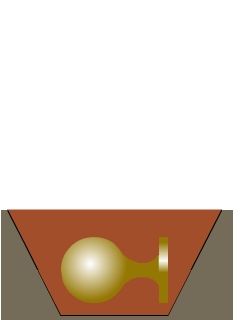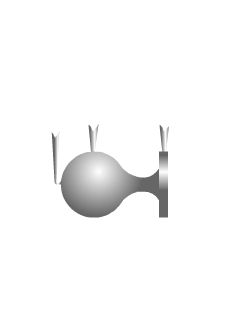NonCommercial-ShareAlike 4.0 International
https://creativecommons.org/licenses/by-nc-sa/4.0/
A wooden pattern of the required casting shape is made. A metal or plastic pattern can also be used.
The other half of the mould is placed on top, again starting with a wooden or metal frame.
Sand is added around the pattern through a sieve, so that it packs together better.
The sand is then packed around the pattern using the wedge-shaped end of a rammer.
More sand is added, this time not sieved.
The sand is then rammed in firmly using a peen or the flat end of the rammer.
The sand is then levelled off, and the excess removed.

Next some holes are created in the sand to allow the molten metal to be poured in.
Small holes are created in the surface of the sand, and CO2 gas is passed through to harden the molding sand mixed with the water glass.
The 2 halves of the mould are then separated and the pattern removed.
The entrance to the mould (the runner) is then connected to the mould cavity, and the other half mould is hardened with CO2.
The 2 halves of the mould are placed back together, ready to make the casting.
Molten metal is poured through the runner until it fills the mould & starts to flow up the risers.

The metal is left to cool and solidify, and then the mould is broken apart to reveal the casting.